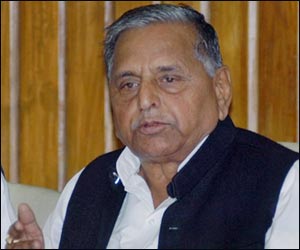
New Delhi, September 21: In what would be a huge relief to Manmohan Singh government, the Samajwadi party chief Mulayam Singh Yadav has said that he will support UPA government to keep communal forces at bay.
Speaking to reporters on Friday, Mulayam Singh Yadav said that he will not withdraw support from the UPA govt.
Meanwhile, with Trinamool congress set to exit the UPA, the Congress top brass, including Prime Minister Manmohan Singh and party chief Sonia Gandhi, will meet on Friday evening to decide the future course of action.
A meeting of the Congress core group headed by Gandhi is scheduled in the evening amid reports that Trinamool Congress ministers will be sending their resignations during the day.
This is the second meeting of the Congress core group which had met only two days back, a day after Mamata Banerjee announced the withdrawal of support.
Government managers are confident of the numbers even after the withdrawal of support by the 19-member Trinamool Congress, which has been the second largest constituent of the 15-party ruling alliance.
With the Centre not in a mood to yield to her demands for withdrawing the decisions on diesel, LPG cylinders and FDI, Banerjee on Thursday said in Kolkata that her party's six ministers will submit their resignation to Prime Minister Manmohan Singh.
Trinamool has six ministers, including one of Cabinet rank, in the UPA government.
After Trinamool's withdrawal of support, the UPA government's support in Loksabha will come down from 273 to 254 and the coalition will be heavily dependent on Samajwadi Party (22) and BSP (21) for its majority in the House.
For a simple majority, government needs the support of at least 273 MPs in a House of 545.





Comments
Add new comment